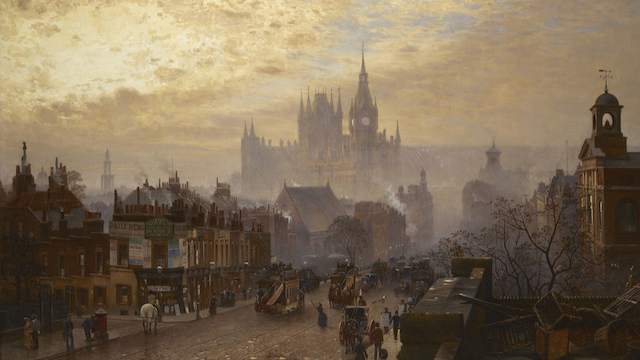
Today, I’m happy to feature a review from one of the newest members of the John H Watson Society. Please welcome, “Dot,” who has written an early review of The Case of the Six Watsons by Robert Ryan, JHWS “Caesar” which will be available on September 3rd:
Robert Ryan, the John H. Watson Society’s own “Caesar,” has a new collection of short stories forthcoming, which I was fortunate enough to be able to preview. The Case of the Six Watsons presents stories that I am certain will delight members of the JHWS as much as they did me. Dr. John H. Watson is the focus of this collection, and each of the stories showcase his character and qualities in interesting ways.
The short story collection is dedicated in memory of Don Libey, the John H. Watson Society’s founder, known affectionately as “Buttons,” who passed away earlier this year, and is deeply missed. The short stories, themselves, contain a couple of lovely in-text references to Buttons, which I shall leave the reader to discover. I wouldn’t want to spoil the surprise!
Most of the stories in the collection of six have, as their inspiration, a piece of writing by Arthur Conan Doyle. These are the “apocrypha,” including stories such as “The Man with the Watches” and “The Lost Special.” Ryan builds upon the apocryphal stories, imagining Watson, and sometimes Holmes, within the events. What I found thrilling was the sheer range of the six stories Ryan tells. They are all set at different periods in Watson’s life, giving us an interesting view of the ways in which his character changes over time, and the ways in which he remains constant. It also gives us a view of how his friendship with Holmes changes over this time. In some instances, Watson easily predicts Holmes’ behavior, and is able to react accordingly. In “The Broken Crocodile”, they are estranged. Not only do the stories give us an interesting sampling of different periods in Watson’s life, they also allow Ryan to tell stories that are flavored with a variety of different tones and genres. “The Brazilian Wife” transitions from a more standard mystery setup to become a tense adventure story. “The Wrong Detective” is a locked room mystery that takes place in a train, with a compelling drama at its heart. “The Beetle Lover” and “The Prisoner in B.24” have some intriguing gothic horror elements.
“The Prisoner of B.24” is also notable because it allows Watson to act in the role of judging a man’s innocence, and then acting upon that judgement in order to prevent a miscarriage of justice by the law. This is a role similar to those we have often seen Holmes play in the canon, so it is exciting to see Watson have his turn, and then to be able to relay what occurred to Holmes, when his friend returns to Baker Street.
I especially enjoyed two of the stories, “The Brazilian Wife,” and “The Broken Crocodile.” “The Brazilian Wife,” which I mentioned earlier, takes place during the Great Hiatus. Watson takes up the case of a client who appears at Baker Street during the time when Holmes is believed dead, despite receiving a mysterious message warning him to stay out of the matter. He finds himself embroiled in a situation that is not what it initially seems. The story has the feel of an excellent, suspenseful adventure story, and it is wonderful to see Watson show his qualities of adaptability, resourcefulness, and courage in a dire situation.
“The Broken Crocodile” is set within the “Watson at War” series, though it stands very well as an independent story. It is set in the Cairo of World War I, where Watson is working in his capacity as a military doctor, overseeing the implementation of a new blood transfusion technique. When a bowl purchased by Mrs. Emily Marchand at the market is accidentally shattered, Watson is introduced to T. E. Lawrence, who helps him find a local craftsman who is able to repair the bowl. From there, Watson is drawn into detective work and espionage, working to try to catch a spy copying maps produced in the map room where Lawrence works. This story is rich with intriguing details that evoke a strong sense of the setting, the period, and the characters. Also, I admit, I’m a mark for historical archaeologists (my undergraduate degree is in Classical and Near Eastern Archaeology), so it was a thrill to read about Watson meeting, and having an adventure with, T. E. Lawrence. The references to the events within the “Watson at War” series were enough to give me a fuller sense of Watson’s character, and the context of his life at the time. They provided me with enough information to make me curious about the rest of the series, which I hope to be able to read in the future. On the whole, the story acts as a nice finale to “The Case of the Six Watsons,” providing a fun conclusion, as well as the possibility of being a jumping on point for future reading!
Happy Reading,
Lauren Messenger, JHWS “Dot”
 Bodies washing up along the eastern coast of New England and the mysterious grounding of a “ghost ship” near Manhattan combine to bring Sherlock Holmes out of retirement to resume his pursuit of the villainous Baron Antonio Barlucci-the Whitechapel Vampire. But when he arrives in London to enlist the assistance of Dr. Watson, the good doctor has reservations.
Bodies washing up along the eastern coast of New England and the mysterious grounding of a “ghost ship” near Manhattan combine to bring Sherlock Holmes out of retirement to resume his pursuit of the villainous Baron Antonio Barlucci-the Whitechapel Vampire. But when he arrives in London to enlist the assistance of Dr. Watson, the good doctor has reservations.















